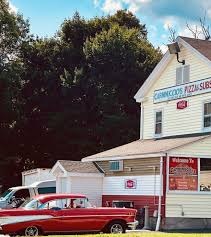A century-old nonprofit operator of homes for seniors is shifting its focus to funding technologies that help keep seniors out of nursing facilities, reflecting a trend in the industry.
Aging in America has built and maintained independent living facilities in New York City and its suburbs since 1852. At one point the company managed 700 employees across several facilities and educational programs. Today, it is down to three employees and a partnership with one senior care facility.
The stripped-down nonprofit, which moved its office from the Bronx to 2975 Westchester Ave. in Purchase in March, announced this spring that it would shift its focus. The nonprofit has millions of dollars from sales of its operations that it intends to use for investments and grants to companies that develop technology to help seniors live independently. It will also look to partner with other nonprofit organizations that provide senior services and housing.
“We know that most seniors want to stay at home,” said William Smith, the CEO and president of Aging in America. “In order for that to happen, technology will have to play a much bigger role than it does today. So we”™re looking at that instrument as a possible investment opportunity.”
Smith has been CEO of Aging in America for 23 years and in the long-term care business for 45. In that time, he said he has seen the financial environment shift in a way that makes it difficult for small nonprofits to maintain nursing homes or any other large senior care facilities.
The combination of increasing costs from labor and state mandates, paired with a decrease in state and federal funding, have strained tight resources for small nonprofits. Smith said this provides an advantage to larger corporations in the senior care industry, as they can pool resources among several facilities for costs savings.
“I think we are seeing the beginning of a shrinking of not-for-profit entities, unless they are really huge and can sustain this battle with the outside funders,” Smith said.
Early practitioner
Aging in America traces its roots to very small beginnings. It started with just one resident.
That was in 1852, when the Rev. Dr. Isaac Tuttle of St. Luke”™s Church in the West Village rented a room near his church for an elderly congregant unable to care for herself. Tuttle quickly recognized that there were many women in the neighborhood in similar situations, so he rented an entire building at 543 Hudson St., which incorporated in 1854 as St. Luke”™s Home for Indigent Christian Females. St. Luke”™s bounced around to a few other facilities before building one at 2914 Broadway in the city. By 1900, that facility was renamed St. Luke”™s Home for Aged Women and had 87 residents.
In the late 1960s, St. Luke”™s merged with the Peabody Home, a facility that housed 50 elderly women on Boston Post Road in the Bronx. Both of the nonprofits were looking to expand and decided to pool resources to build and maintain a new facility. That became the Morningside House Nursing Home Co. in the Bronx, which consisted of two buildings with 386 beds total. The building was one of the first in the country to feature a floor designated for the care of residents with Alzheimer”™s disease.
After completing the facility, Morningside”™s board turned its attention to developing programs. By 1990, it was overseeing efforts that managed employment services, research and continuing education, in-home services such as meals-on-wheels and social services for seniors.
To avoid confusion between Morningside House Nursing Home, the facilities, and Morningside House, which developed and ran the programs, Morningside House changed its named to Aging in America in 1982. The name was trademarked in 1990, but the organization does license it out for national conferences.
Increasing costs
Aging in America has since been involved in projects in Woodbury and Lake Ronkonkoma on Long Island and Haverstraw in Rockland County.
But around the time of the Great Recession in 2008, the nonprofit, like so many others, ran into financial challenges. The amount of money the organization could draw from investment income on its endowment shrunk and increasing labor costs and state mandates strained already limited resources, Smith said.
“The board went through a process for about four years of whether or not we should stay in the business of running a nursing home or sell it before it loses equity and the possibility of going into bankruptcy,” Smith said.
Aging in America sold its facility in Lake Ronkonkoma in 2012 to Chicago-based Ventas Inc. and sold Morningside House and all of its programs to Cassena Care in 2014. The facility in Woodbury had been sold in 1996.
For Haverstraw Place, the last facility Aging in America is involved in, the organization has a decision to make by 2017. Right now, the organization provides one social worker to the entity, but it has the option to take over the operation and its mortgage next year or to sell it to a new operator. Smith said the board is still weighing the decision.
But the increasing costs of managing senior care facilities isn”™t the only reason Aging in America wants to shift focus. The term “age in place” is commonly used in the health care industry to describe the preference of older Americans to stay at home and within their communities.
Aging in America, citing a report from John Hancock Financial Service Inc., said staying out of a nursing home can save seniors in New York more than $100,000 per year.
Starting next year, Aging in America plans to put out request for proposals for projects, mostly focused in technology, that can help seniors age in place. Smith said they are likely to provide $50,000 to $100,000 to an undecided number of projects each year. The nonprofit has about $28 million in assets from the recent sales of its operations that can fund new ventures, Smith said. The organization is also considering providing low-interest loans to nonprofit senior living developments.
To allow seniors to save that money, and keep their independence, Smith said funding for this kind of innovation is needed.
“We think technology will help keep people independent,” Smith said. “We want to empower seniors to take charge of their own destiny.”
















